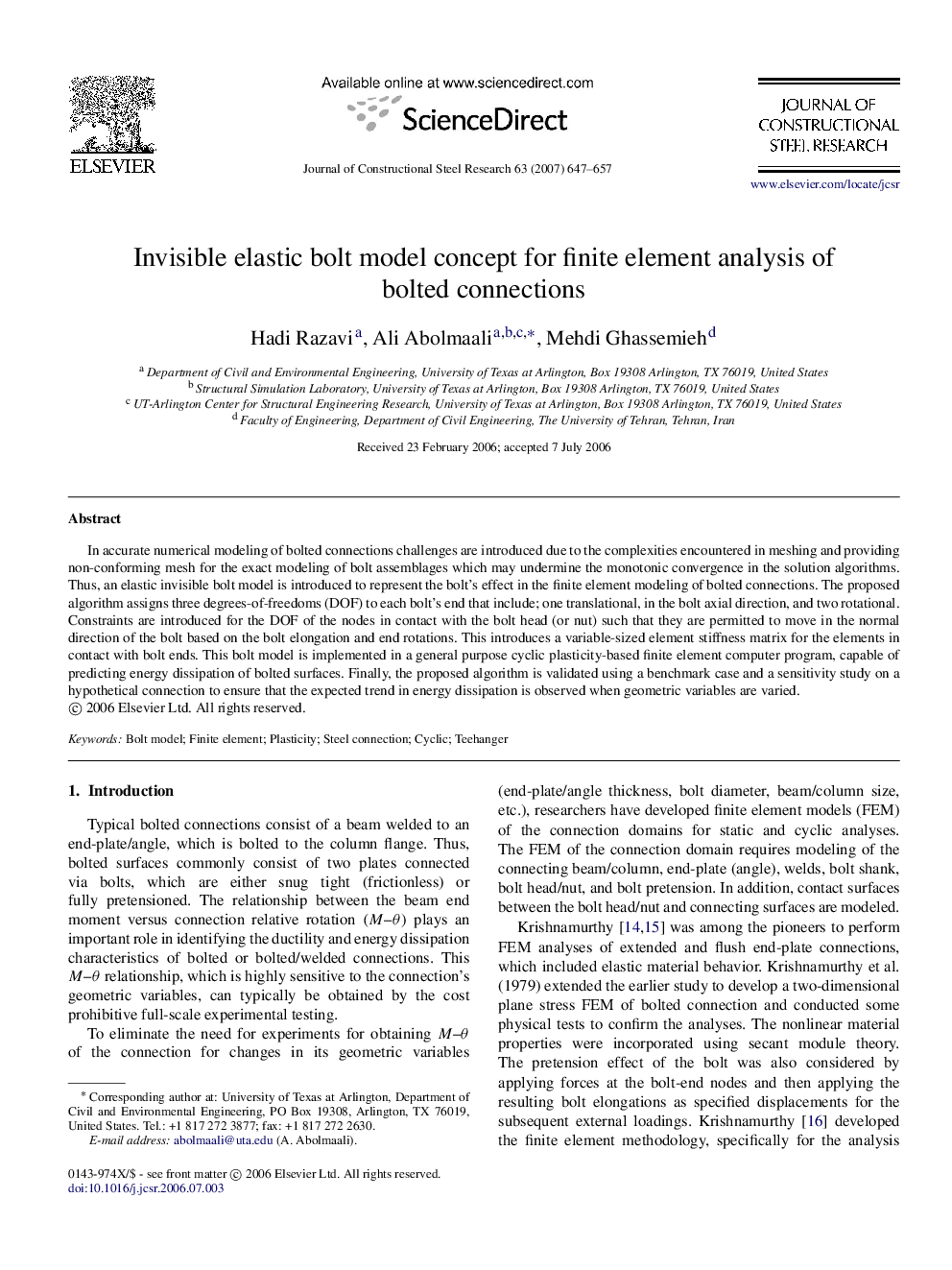| Article ID | Journal | Published Year | Pages | File Type |
|---|---|---|---|---|
| 286116 | Journal of Constructional Steel Research | 2007 | 11 Pages |
In accurate numerical modeling of bolted connections challenges are introduced due to the complexities encountered in meshing and providing non-conforming mesh for the exact modeling of bolt assemblages which may undermine the monotonic convergence in the solution algorithms. Thus, an elastic invisible bolt model is introduced to represent the bolt’s effect in the finite element modeling of bolted connections. The proposed algorithm assigns three degrees-of-freedoms (DOF) to each bolt’s end that include; one translational, in the bolt axial direction, and two rotational. Constraints are introduced for the DOF of the nodes in contact with the bolt head (or nut) such that they are permitted to move in the normal direction of the bolt based on the bolt elongation and end rotations. This introduces a variable-sized element stiffness matrix for the elements in contact with bolt ends. This bolt model is implemented in a general purpose cyclic plasticity-based finite element computer program, capable of predicting energy dissipation of bolted surfaces. Finally, the proposed algorithm is validated using a benchmark case and a sensitivity study on a hypothetical connection to ensure that the expected trend in energy dissipation is observed when geometric variables are varied.
